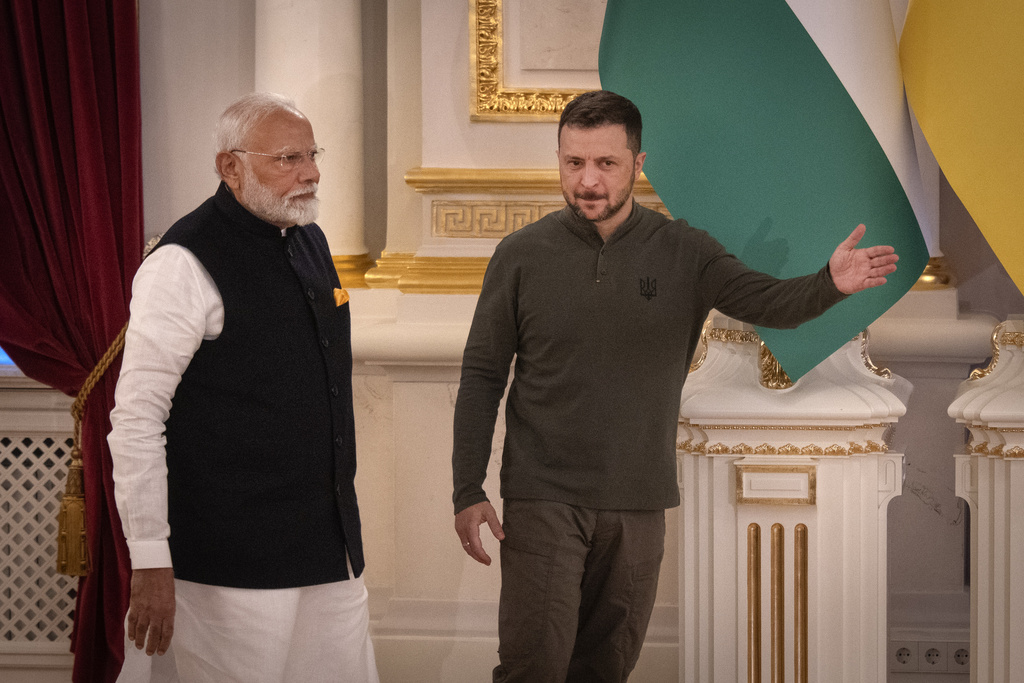India at the Crossroads: Can Ukraine Turn India’s Neutrality into Support?

India’s strategic neutrality in the Russia-Ukraine war, rooted in its pursuit of national interests, faces growing pressure as Kyiv leverages food security and critical resources to sway Delhi’s stance.
Ukrainian diplomacy confronts India’s tradition of strategic autonomy, rooted in the Non-Aligned Movement. Today, Delhi presents it under the new banner of “plurilateralism”: cooperation with the most diverse partners to maximize national benefits, even when it involves global value-based conflicts.
This is how External Affairs Minister Subrahmanyam Jaishankar explained the absence of a choice between “Kyiv or Moscow,” emphasizing that “India stands on the side of peace, not on the sides of the war.” This official stance allows Delhi to simultaneously expand defense cooperation with the United States, purchase discounted Russian oil, and participate in negotiations regarding Zelenskyy’s “peace formula.”
India’s Economic Shackles: Oil, Arms, and Its Domestic Market
For nearly three years, India has demonstrated that cheap Russian resources and inherited dependence on Soviet-era equipment outweigh reputational risks. In 2023, Russia’s share of arms supplies to India dropped to 45%, but it remains critical: New Delhi is not ready to abruptly sever this interdependence until joint production with the U.S. and France is fully operational.
On the other hand, global energy prices and domestic demand logic compel India to import Russian oil, paying primarily in rupees, which Moscow cannot convert. This financial “bottleneck” is already becoming an argument for Kyiv: every rupee Russia cannot spend outside India limits its war economy.
Considering Political Tectonics: Modi’s Visit to Kyiv and Tariff Pressure from Washington
The first-ever visit of Prime Minister Narendra Modi to independent Ukraine in August 2024 marked a “broken inertia” in relations: India agreed to participate in global peace discussions and launched a grant program for rebuilding Ukrainian schools and hospitals. This step opened a channel for Delhi to the European security table and signaled a strengthening of “warm diplomacy” in 2025.
Simultaneously, India faces pressure from new American tariffs: Donald Trump announced a 25% duty on Indian imports, directly linking it to India’s purchases of Russian energy and arms. Consequently, a new variable emerges for New Delhi: trading with the Kremlin becomes financially risky, and remaining aloof from the Western world becomes costlier.
Ukraine’s Set of Arguments: From “Grain Diplomacy” to Lithium
Kyiv is building a dialogue with India not only around a “moral imperative.” First, there’s food security: Ukraine remains the third-largest supplier of sunflower oil to the Indian market. Disruptions to Black Sea corridors impact India’s food inflation, so Kyiv emphasizes in negotiations that weakening Russia guarantees stable and affordable grain and oil supplies for decades to come.
Second, the “China factor”: Moscow’s defeat reduces Beijing’s operational space, aligning with Delhi’s strategy to contain its main rival in Asia.
Third, critical raw materials. Ukraine’s lithium reserves—comparable to Portugal’s—offer India’s “green” industry an opportunity to diversify battery metal sources, bypassing China’s monopoly.
Finally, the Black Sea theater experience: Ukrainian naval drones and asymmetric warfare tactics against Russia’s fleet hold intellectual value for India’s navy, preparing for hypothetical clashes in the Indian Ocean.
Global South as a Competitive Arena
In 2023–2025, Delhi positions itself as the “voice of the Global South,” appealing to African and Latin American states wary of “Western lectures.” Ukraine counters with the argument that true independence for the South will only be possible after defeating imperial revanchism, and food security and energy transition will suffer if Russia continues to hold the Black Sea hostage. Kyiv also stresses that a joint UN reform project is the main platform where India’s and Ukraine’s interests align: both countries advocate for expanding the Security Council and limiting veto power.
Key Players Seek a Window of Opportunity: Three Scenarios
The first: India remains “neutral” but does not block European schemes to supply ammunition to Ukraine’s military, as seen with artillery shells resold through Italy and the Czech Republic.
The second: Delhi gradually reduces Russian oil imports under tariff pressure and fear of secondary sanctions; in this case, participation in the “peace formula” shifts from symbolic to substantive.
The third: breakthrough: India takes on the “grain portfolio” in Ukraine’s post-war reconstruction and enters lithium concessions; political loyalty to Moscow then becomes an unnecessary burden.
A Chance to Shift Delhi’s Position Exists, But It Lies in Pragmatic Calculation
The chance to change Delhi’s stance exists, but not in the realm of morality – it lies in pragmatic calculation. The costlier Russian oil, tank components, and reputational losses on global platforms become for India, the more compelling Ukraine’s proposals appear: guarantees of food stability, access to critical raw materials, and a role as a security partner in the Baltic-Black Sea region.
Delhi’s transition from “neutrality” to “tilting the scales of peace” is unlikely to be abrupt, but every strengthening of Ukrainian diplomacy makes this drift more likely – and this is where the real battle for influence in the Global South unfolds.
Dmytro Levus, foreign policy expert, analyst at kyiv-based United Ukraine Think Tank